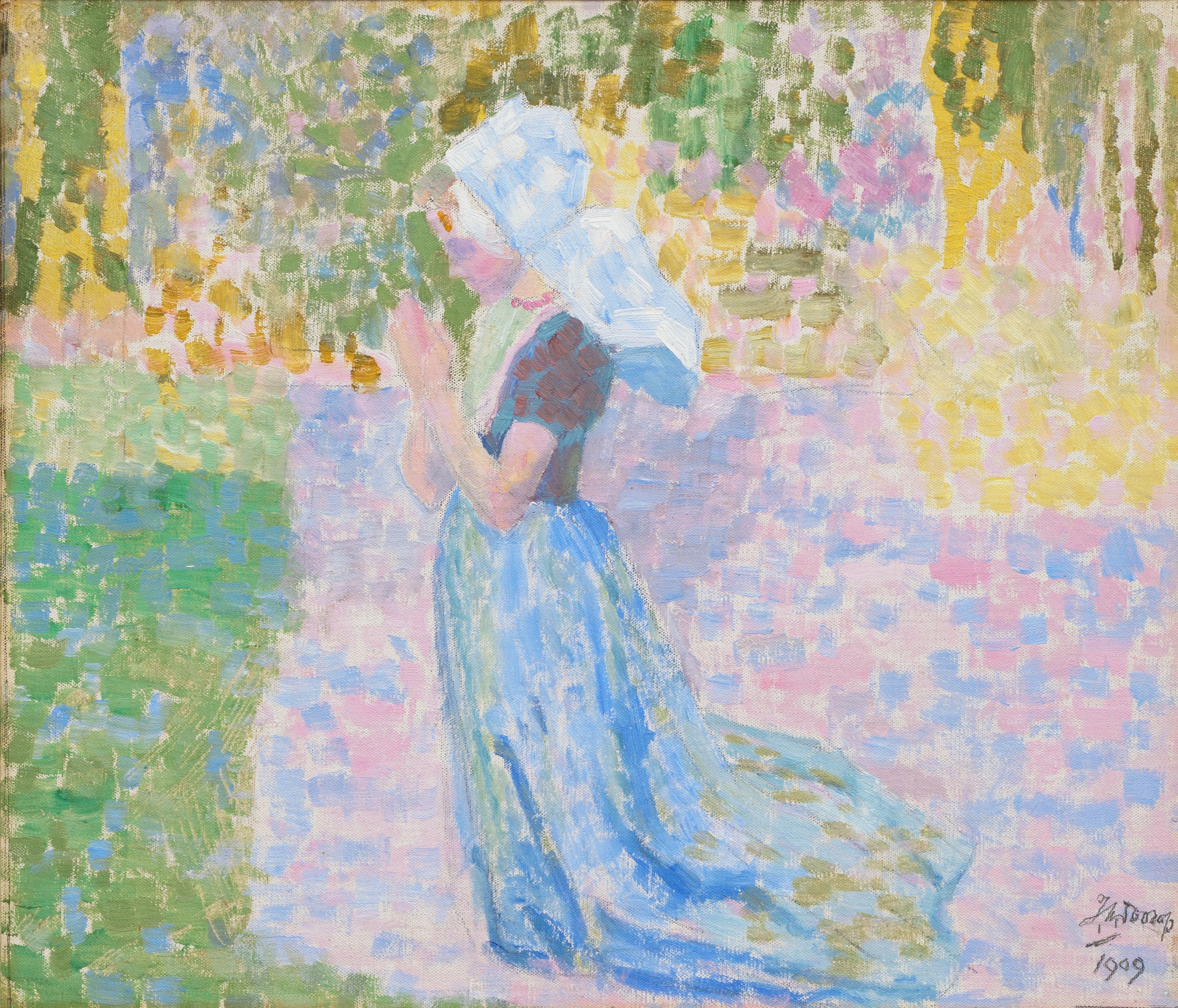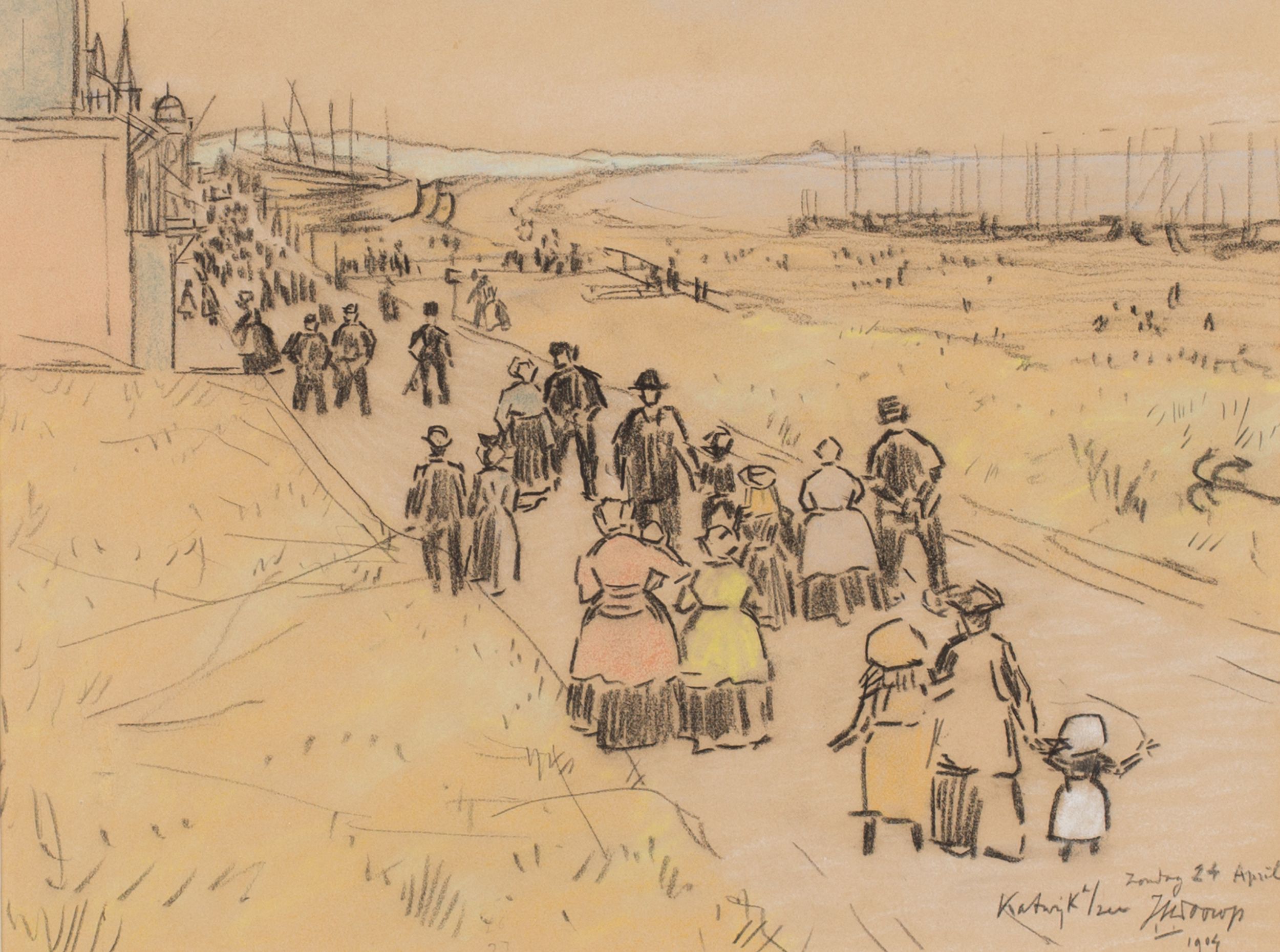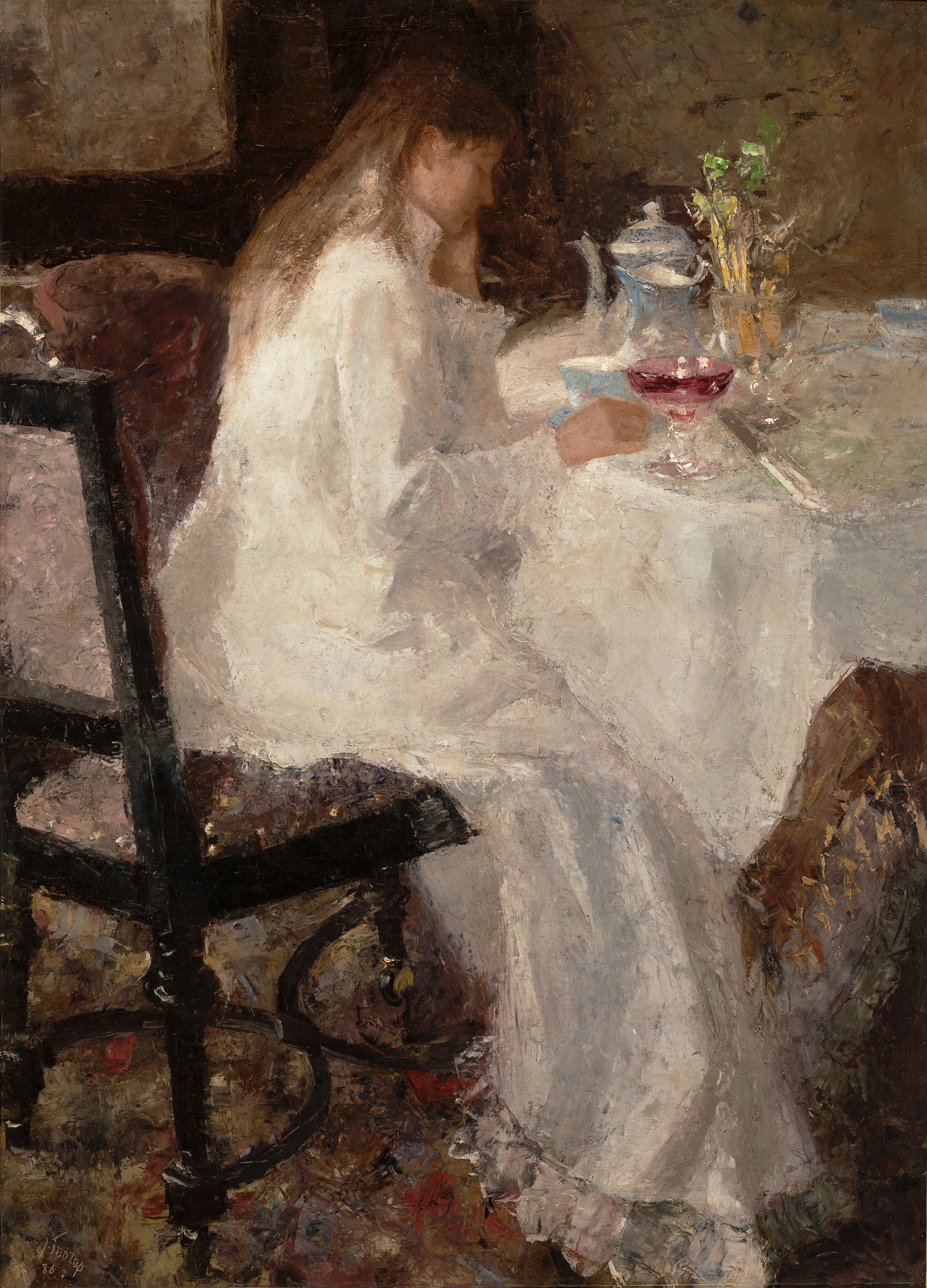J.TH. (JAN) TOOROP
Artists
Biography
J.TH. (JAN) TOOROP
1858 Purworejo (Indonesia) - 1928 The Hague (The Netherlands)
Jan Toorop was pivotal in the web of the Dutch and European art world in the late 19th and early 20th centuries. He gave an important push to the renewal of art in the Netherlands because of his contacts with foreign artists, but also by publicizing the work of Vincent van Gogh. He introduced new art movements, such as Art Nouveau, Symbolism and Pointillism. Toorop was often the first to adopt new styles and techniques, incorporate them in his own way and pass on to artists at home and abroad. He was, as the only Dutchman, a member of the progressive artists' association Les Vingt in Brussels. In England he discovered the Pre-Raphaelites and the Arts and Crafts movement, which greatly influenced his monumental and symbolist work. In 1887 he went to Paris with the Belgian painter James Ensor, where he saw the work of the pointillists Georges Seurat and Paul Signac and immediately adapted it into his own work. In doing so, he had a huge influence on Jan Sluijters, Leo Gestel and Piet Mondrian. Jan Toorop was the one, who first introduced pointillism and then divisionism in the Netherlands; later continued and further developed in a different form by Jan Sluijters (1881-1957), Leo Gestel (1881-1941) and Piet Mondrian (1872-1944). Toorop, due to his regular stays in Belgium and his close contacts with artists in Brussels, was the only Dutchman invited to join the avant-garde group "Les XX" in the early 1980s. Prominent artists such as James Ensor (1860-1949), Theo van Rijsselberghe (1862-1926), Fernand Khnopff (1858-1921), Henry van de Velde (1863-1957), Félicien Rops (1833-1898) and Georges Lemmen (1865-1916) were part of "Les XX." Toorop served more or less as an intermediary between the Netherlands and Belgium: he ensured that artists of the Hague School could exhibit in Belgium and, in reverse, he introduced the Netherlands to new movements of our southern neighbors. Every year he sent work to the exhibitions of "Les XX." The influence of Ensor's work in the early years of the group on Toorop is striking. Both his subjects and his use of the palette knife were derived from Ensor. Zeeland, and in particular Domburg on Walcheren, was a seaside resort where Toorop spent many summer months in the early years of the 20th century, organizing exhibitions and inviting like-minded people to the resort. Toorop's divisionism, also called block-pointille, consisted of short detached paint strokes, mostly applied in unmixed colors, creating a mosaic-like structure. The painting "Young peasant woman picking apples" is a good example of this technique. Toorop was living in Amsterdam in 1905, where his new style of painting would become the forerunner of the movement a year later would be called Amsterdam Luminism, with Sluijters, Gestel and Mondrian, among others, as representatives, who would work in this style until 1911.
7 results sorted by artist. Showing results 1 - 7.






